A trash gremlin trying to be responsible and change the world.
Don't wanna be here? Send us removal request.
Text
Hey. If you have clothes or sheets or other textiles that are still usable? PLEASE don't throw them in the trash. PLEASE don't put them in the recycling bin (they'll just become trash).
Find somewhere to donate them. A lot of donation sites will take torn clothing, because it can be downcycled or cut up for the fabric that's still good.
#Fabric#Downcycling#Textiles#Recycle#Reuse#I pulled 8 garbage bags of new and like new sheets out of a dumpster today#And dropped them off at Goodwill
16 notes
·
View notes
Text
30K notes
·
View notes
Text
The finished result! I’m so ridiculously proud and pleased with how it turned out!
This was an ordinary door + 3 pieces of mdf board. I carved and sculpted them with my dremel multitool, inspired by the carvings I saw in Bali, mounted them and then painted and sanded the whole thing in several layers before adding a final tint of gold. 💙
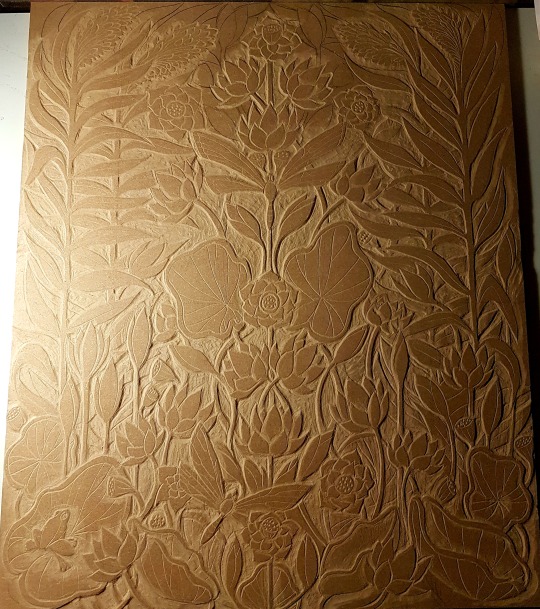
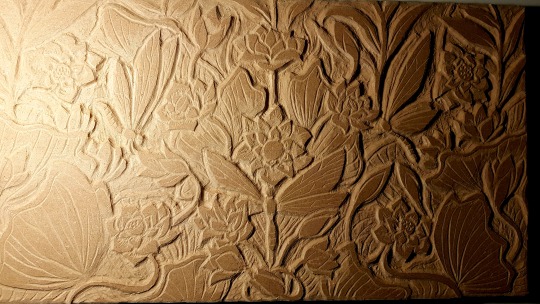
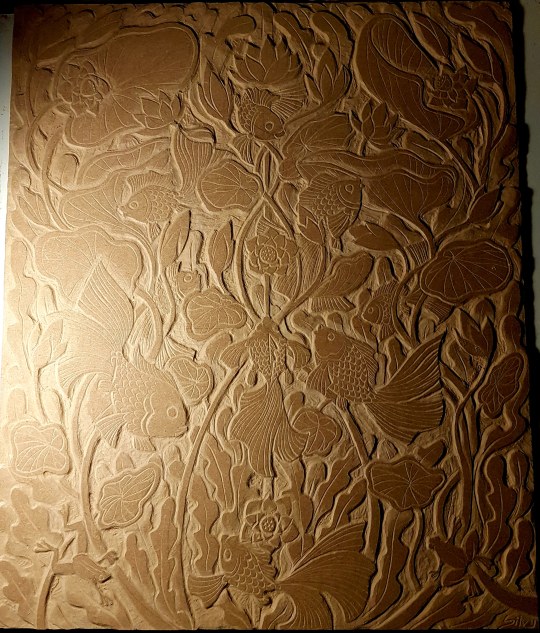
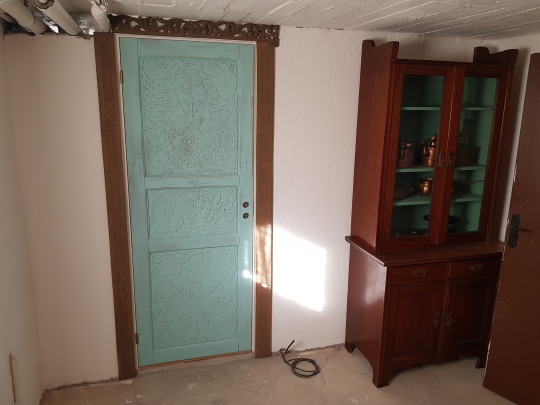
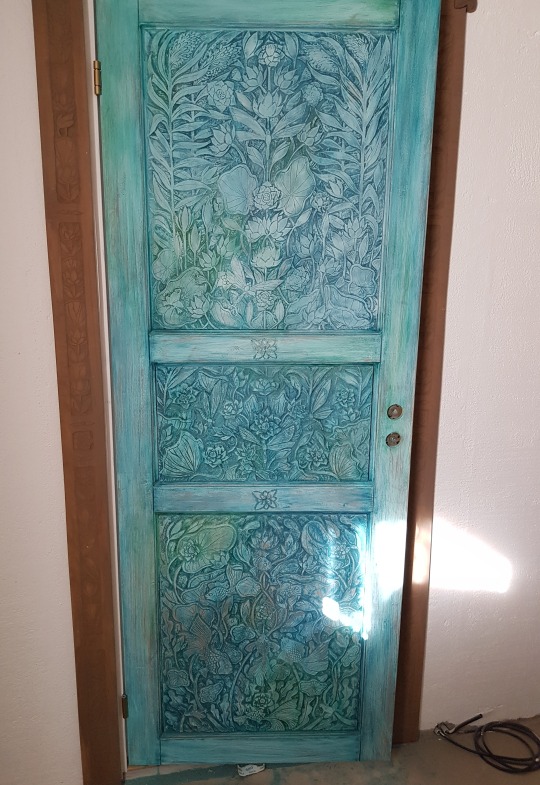
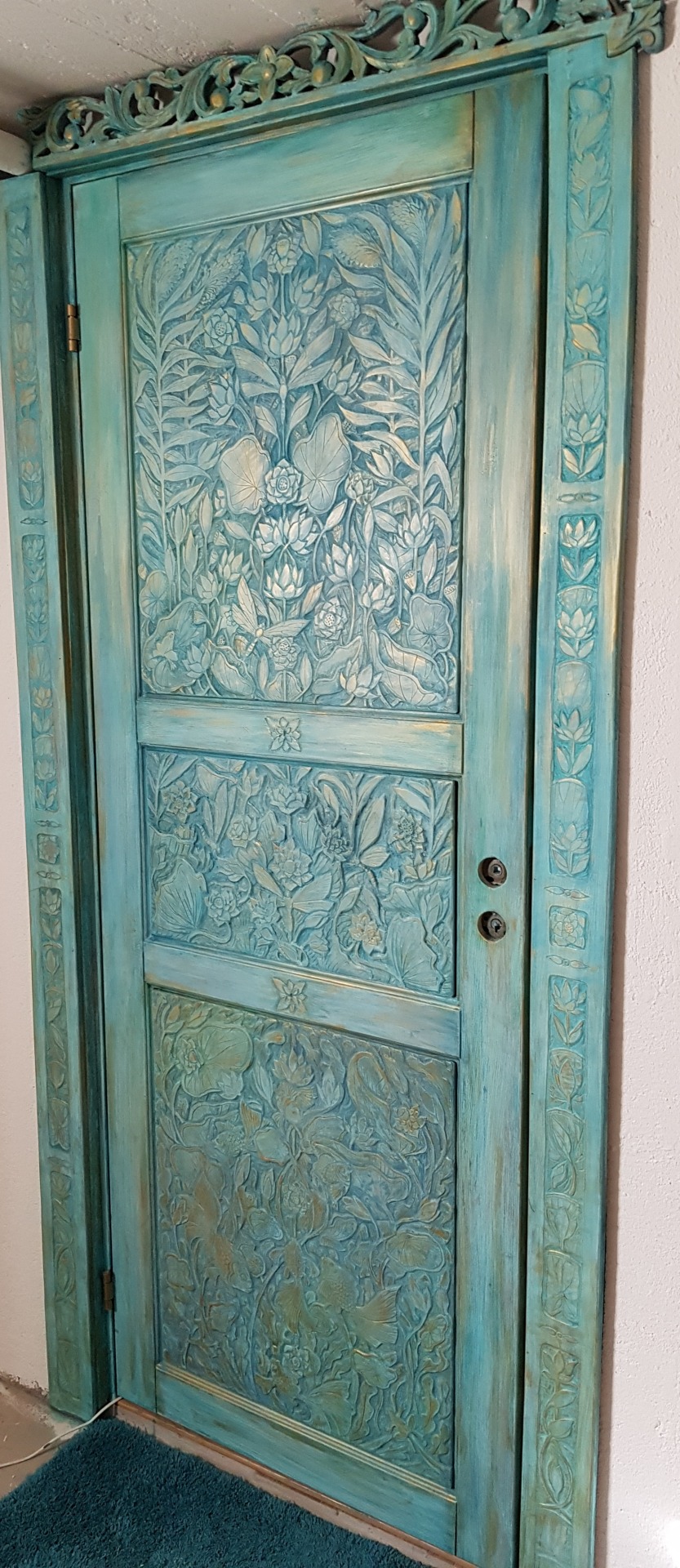
The door and side panel I sculpted myself. The top carving is from Bali.
38K notes
·
View notes
Text
SLEEVE: FIXED
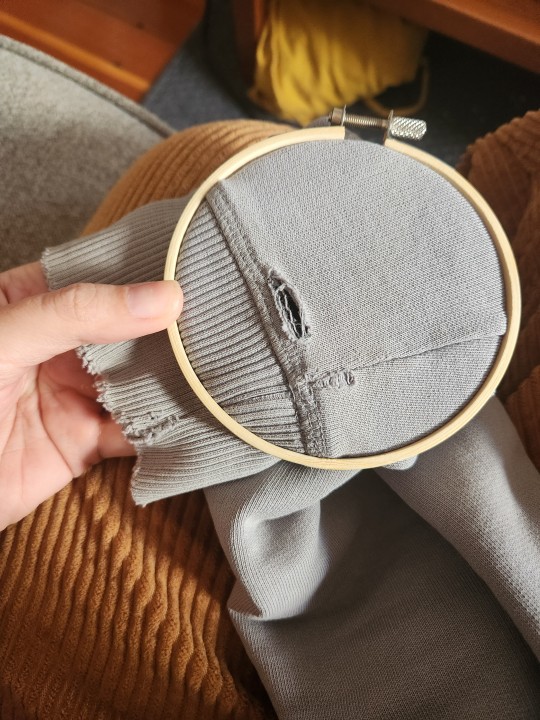

44K notes
·
View notes
Text
I was reading a book on darning. Apparently the way I darn socks isn't an "official" technique 😂 although it shares some aspects with English darning. Whatever. I hated most of the techniques in the book 🤣 but it still indirectly inspired me to try combining sashiko with square darning.

This pair of pants tore a small hole in the knee ages ago. I've had them in my mending pile while I waited for inspiration to strike. Basically I ran random stitching vertical and horizontal, not trying for regular length of stitches or distance between lines, except in the very center where I picked up extra lines and then wove them from the opposite direction in a square darn.
Supplies: Olympus 100% cotton sashiko thread in navy (103), and a small metal mixing bowl for a darning "mushroom"
Work in progress, below. While the vertical lines were easy to keep straight by following the lines in the denim, horizontal proved impossible without drawing guidelines (in brown). (Not widely approved of, I'm sure, but kids super-washable Crayola fine tip markers are great for this imo. 👍 So far they've always washed out for me.)
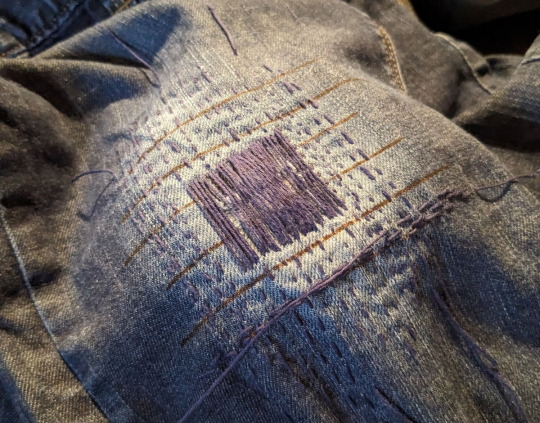
The hole, from the reverse, because I always forget to take "before" photos:
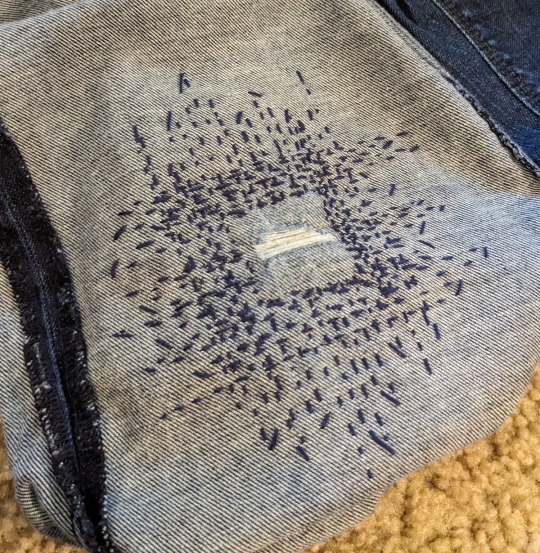
My only regret is that I didn't put an additional piece of denim behind the hole as reinforcement. That may or may not backfire on me. However, so far I'm very please with the outcome. I washed them, everything held up, and the patch is comfortable when wearing.
#mending#sashiko#sashiko inspired#darning#reduce reuse repair#fiber crafts#and after I finished this project I ordered about 5 more colors of thread#I have at least three more pairs of pants with holes and I feel inspired#visible mending
156 notes
·
View notes
Text
here's my latest darning

I don't even know how many hours these took.
10 notes
·
View notes
Text
The tragedy of being an entomologist is having to continuously grovel for people to care about insects in the middle of a global climate crisis
921 notes
·
View notes
Photo
But seriously, check around to see if you have a makerspace in your area. Some of them have sergers and sewing machines you can use!
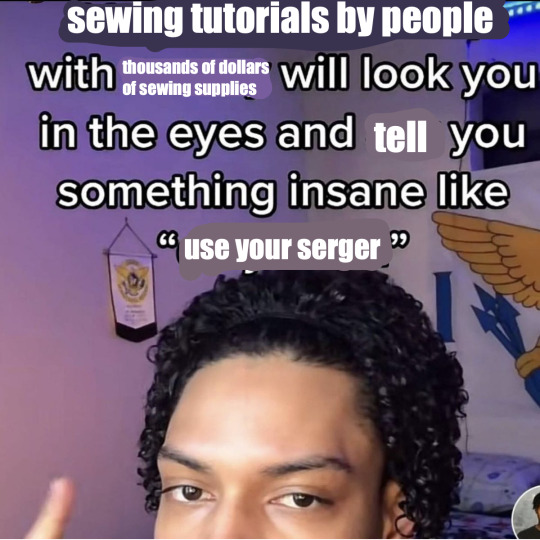
55K notes
·
View notes
Text
I don't want a romantic partner I want friends who will go dumpster diving with me, I want neighbors who will knock on my door and ask for butter because they forgot to buy some and it's sunday. I want book shelves in public spaces, food banks and shared tool sheds and community gardens. I want to trade home grown tomatoes for a couple of eggs with my neighbor and I want to bring food over to my friends house when I've cooked too much. I want bicycle only streets and I want people to go on spontaneous walks with. I want people to ask me for help when they need it and I want to be able to ask for help in return. I want community as a safety net. I want people to stop focusing on the vague concept of the one, who will Cure All Isolation and Loneliness. I want every single person to be able to find support and comfort around them, regardless of their relationship status.
41K notes
·
View notes
Text
I'm listening to a great podcast episode, all about garbage and trash and recycling and the meaning of trash in our lives.
Discard Anthropology (GARBAGE) with Robin Nagle
from Ologies with Alie Ward
Landfills! Treasures in the trash! Corporate conspiracies! Composting! An instantly classic conversation with the incredibly knowledgeable, frank and wonderful Dr. Robin Nagle of New York University’s Liberal Studies! She is a clinical professor, author, TED speaker and former New York City sanitation worker and truly the best person on Earth to trash talk with. We cover what you can and can’t actually recycle, sticky mustard bottles, drugs in the trash, Swedish Death Cleaning, mobsters and landfills, Bitcoin in the dump, the future of garbage and exactly how screwed we are.
Not to be utterly conceited, but at the point I've learned a number of things from it or had some great 'ah ha!' moments, it's got an impressive amount of good information and thought provoking content.
5 notes
·
View notes
Text
Today I blew someone's mind by explaining that their paper coffee cup was actually lined with plastic.
So, yes, in case anyone else is not aware, pretty much all the "paper" cups these days are made from paper with a thin layer of plastic inside to give them that water-proof ability.
These cups are usually recyclable, but the recycling facility has to separate the plastic from the paper pulp before it can be used, which is harder to do than recycling plain paper. Here's one of the first web resources I found, if anyone wants to read more.
0 notes
Text
Listen, maybe I can’t change the world, but I can pass eggs over the fence to my neighbor to save them a few dollars. I can cross the street and fix another neighbor’s cabinets. I can send my kid to the house next door with a can of tomato sauce they need and they’ll come back with a box of cocoa powder they weren’t going to use. We can leave our old furniture at the curb and one of us will drive by and pick it up to fix and sell or keep. I’ll plant a garden since I have the space and time and I’ll share what I can and I’ll get calls from someone else asking if I can use a crate of oranges.
I may not be able to change the world but I can do something
49K notes
·
View notes
Note
What do you suggest to mend ribbed cuffs on hoodies? I have plenty of hoodies and unfortunately there are holes on my cuffs. I have no idea how it happened either.
Honestly? Whenever that happens to mine, I never know how it happened, either.
Mending ribbed cuffs:
It might not seem like it because the knitting's often very small, but ribbed cuffs are usually knitted cuffs. This means they stretch, something we'll have to take into account when mending them.
There's a few ways you could mend these cuffs. Let's take a look:
Techniques:
If it's a small hole, get some matching thread and fix up the hole with a ladder stitch. You could leave it like that, or hide your mend by embroidering over it.

(Image source) [ID: a gray sleeve with a ribbed cuff covered in embroidered red roses with green vines and leaves.]
You could also sew a patch over the hole. Note that big patches may make your cuff less stretchy.

(Image source) [ID: a gray cuff with a black round patch sewn onto it with blue thread.]
If the cuff's edge is fraying badly, you could also embroider over the edge, or sew on a new strip of fabric (note that these fixes may stop your cuff from stretching).

(Image source) [ID: gray ribbed cuffs with pink embroidery on the edges.]

(Image source) [ID: a yellow jacked with a patch of red tartan fabric covering the frayed edge of one of the cuffs.]
Another option is to darn your cuff. Use matching thread to minimise the visibility of your mend, or contrasting thread to make your mend a design element.
If you use a woven darning technique, the cuff will look nice but you'll lose some of your stretch. If your cuffs' knitting isn't too tiny, you can avoid this by using Swiss darning or a duplicate stitch instead, depending on the type of damage you're trying to repair.

(Image source) [ID: visible mending: how to mend cuffs and edges by Collingwood-Norris. Three knit cuffs lie on top of each other, each darned with contrasting thread.]
If all fails, you'll have to replace the cuffs.
You'll find ribbed fabric or even replacements cuffs at most craft stores. Of course, you could also remove a cuff from a different hoodie and sew it onto the one you're trying to repair, or try to find a worn-out ribbed garment that could be cut up for a new cuff. Old socks are great for this.

(Image source) [ID: a six step guide on how to replace the cuff of a sweatshirt.]
If you're a knitter, you could also knit your own cuff! Remove the damaged cuff from your hoodie (with a seam ripper if possible, but just cutting them off is an option too). Either pick up stitches on your existing sleeve and knit a new cuff in the round, or knit a separate cuff (either in the round, or straight and sewn together) and sew it onto your sleeve once it's finished.

(Image source) [ID: a gray sleeve with a colourful knitted cuff attached at the end.]
Conclusion:
Holes in cuffs happen a lot. They're near our hands, and we use our hands all the time, so they get snagged easily. If my suggestions seem a little daunting, just stick to a good old ladder stitch and you'll be fine. If not: be as creative as you want!
#sorry i haven't been posting or reblogging much#real life happened#anyway#mending#sewing#knitting#darning#cuffs#shirts#shirt cuffs
2K notes
·
View notes
Text


I highly recommend this book. It's filled with tons of ideas for reuse. It also reminds us that we can love what we have and we don't need to consume to meet the latest interior fashion craze.
Life Unstyled, Emily Henson
#books#book recommendation#interior design#(or not)#Life Unstyled#Emily Henson#reduce#reuse#ideas#for reference#my posts
1 note
·
View note
Text
When you take a serving bowl from the trash and give it new life.



When the glass paint cures (in 4 days!!!! I have no patience for this), I'm going to patch the chips on the rim with Sugru. Sugru is not supposed to come into direct contact with food, but I have no plans to fill this to the brim, so I think it will work just fine.
0 notes
Text
its fast fashion for u. i wore that for seven years.
29K notes
·
View notes
Text
That sounds so satisfying that you were able to rejuvenate your existing quilt! As you say, bravo for fixing things. :)
So here's a funky repair project. Someone tossed a comforter and sheet set. I wanted to fix them, not have them go to the landfill.
The issue was the comforter. After washing, the batting inside bunched up really weird. (Sorry, I forgot to take a picture.) There was a giant lump in the top quarter of the comforter.
I used a stitch ripper to very carefully open the fabric at the top on each side. Then I reached into the guts and started straightening.

The reason it had a problem is because COMPANIES DESIGN PRODUCTS BE CHEAP TO MAKE, NOT TO LAST. Instead of quilting it (sewing through the top fabric, batting, and bottom fabric) a sufficient amount, the manufacturer sewed a brief line of stitches at 12 places on the comforter. This was not enough. Those stitches came loose in a few places and the batting started moving around enough that it started felting (sticking to itself and forming one giant lump). I did a lot of pulling and flattening, and I ended up having to cut several chunks of batting out because it had stretched and deformed too much to go back to how it was supposed to be. I added new batting in those places, since I had scraps left from a different project.
See? Tiny line of stitches. Ineffective.

After flattening. Colorful. Very much my jam. (I have loud tastes. 🌈)

I needed a way to keep the old and new batting from getting bunched and felted again. I decided there's no time like the present to try something new and that I was going to try yarn-tie quilting it.
I have no idea what I'm doing. I watched a 3-minute video on YouTube. Yolo lmao!

("Wait," you say, "where did the stripes come from?" This, my friends, is just as loud on the reverse as on the front, but in a different pattern. :)))

First I put 12 ties at the original sewn together points. Then I started adding more. They are about 8 inches apart on the diagonal. Hopefully that will be enough.

And here's the other side with all the ties in.

Lastly, I stitched up the slits I'd made in the sides to fix the batting. Instead of trying to use an invisible stitch, I decided on a triumphantly visible blanket stitch (appropriate, yes?) in colors as loud as the comforter itself.

Complete honesty: this project took hours. It is not something I'd typically do on a rescue. But I enjoyed the learning process! (And now I'm adopting this rescue into my household.)
Key takeaways: if you're buying a comforter, get one with quality quilting, if you want it to last. If you already have one with insufficient quilting, you can grab some yarn and a big needle and fix the problem!
60 notes
·
View notes